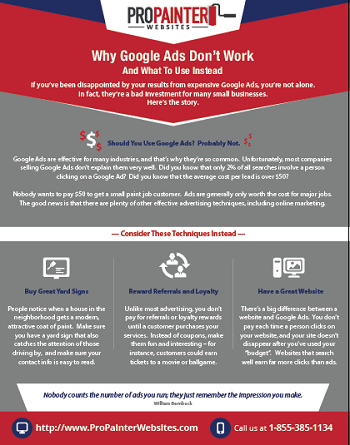Examine The Function Of Seasonal Consider The Success Of Industrial Outside Painting And Discover The Most Effective Times To Safeguard Long-Term Outcomes For Your Project
Examine The Function Of Seasonal Consider The Success Of Industrial Outside Painting And Discover The Most Effective Times To Safeguard Long-Term Outcomes For Your Project
Blog Article
Team Author-Fox Chaney
When you're planning a commercial outside paint task, seasonal variables can make or break your results. You'll want to take into consideration just how temperature and moisture influence paint application and drying times. Picking the ideal season can ensure your paint adheres effectively and lasts longer. Yet which seasons are absolutely the best for this sort of job? Let's discover the crucial elements that can influence your task's success.
The Influence of Temperature Level on Paint Application
When you're intending a business outside paint task, the temperature level can dramatically impact exactly how well the paint adheres and dries.
Preferably, you wish to repaint when temperatures vary in between 50 ° F and 85 ° F. If it's too cold, the paint may not heal properly, bring about problems like peeling or fracturing.
On the other hand, if it's as well hot, the paint can dry out too rapidly, preventing correct attachment and resulting in an irregular coating.
You must likewise take into consideration the time of day; early morning or late afternoon uses cooler temperature levels, which can be much more desirable.
Always examine the producer's recommendations for the certain paint you're using, as they often provide advice on the ideal temperature array for ideal results.
Humidity and Its Effect on Drying Times
Temperature level isn't the only environmental aspect that affects your industrial external paint job; moisture plays a significant function as well. High moisture degrees can slow down drying times dramatically, impacting the total quality of your paint task.
When the air is filled with moisture, the paint takes longer to cure, which can bring about problems like inadequate attachment and a greater danger of mildew development. If you're repainting on a particularly humid day, be gotten ready for extensive delay times in between coats.
It's vital to keep an eye on local climate condition and strategy appropriately. Preferably, minneapolis mn painters for humidity levels in between 40% and 70% for optimum drying.
Maintaining these consider mind ensures your task stays on track and provides a lasting coating.
Best Seasons for Commercial Exterior Paint Projects
What's the most effective time of year for your commercial outside paint tasks?
Spring and very early loss are generally your best bets. During these seasons, temperatures are mild, and moisture levels are commonly lower, producing perfect problems for paint application and drying.
Avoid summer season's intense heat, which can trigger paint to dry also quickly, leading to bad adhesion and coating. In a similar way, winter's chilly temperature levels can hinder correct drying out and curing, running the risk of the longevity of your paint task.
Go for straighline with temperatures in between 50 ° F and 85 ° F for ideal results. Bear in mind to inspect the regional weather report for rain, as damp problems can wreck your job.
Preparation around these elements guarantees your painting job runs efficiently and lasts longer.
Verdict
In conclusion, planning your industrial external painting tasks around seasonal factors to consider can make a substantial distinction in the end result. By organizing work during the excellent temperature levels and moisture levels, you'll make sure much better bond and drying times. Keep in mind to keep an eye on regional weather report and select the correct time of year-- springtime and very early fall are your best choices. Taking these steps will certainly help you achieve a durable and professional finish that lasts.
